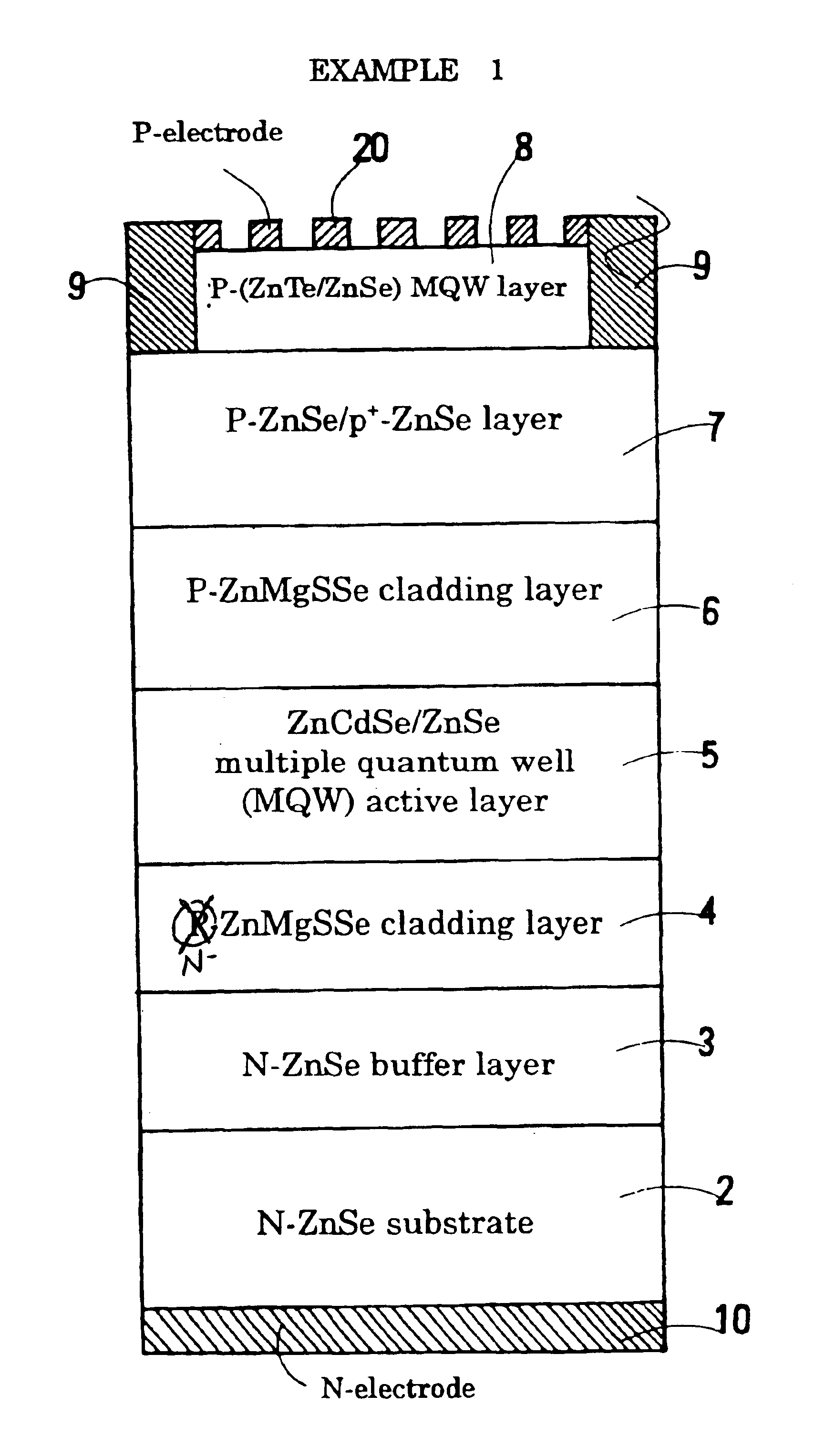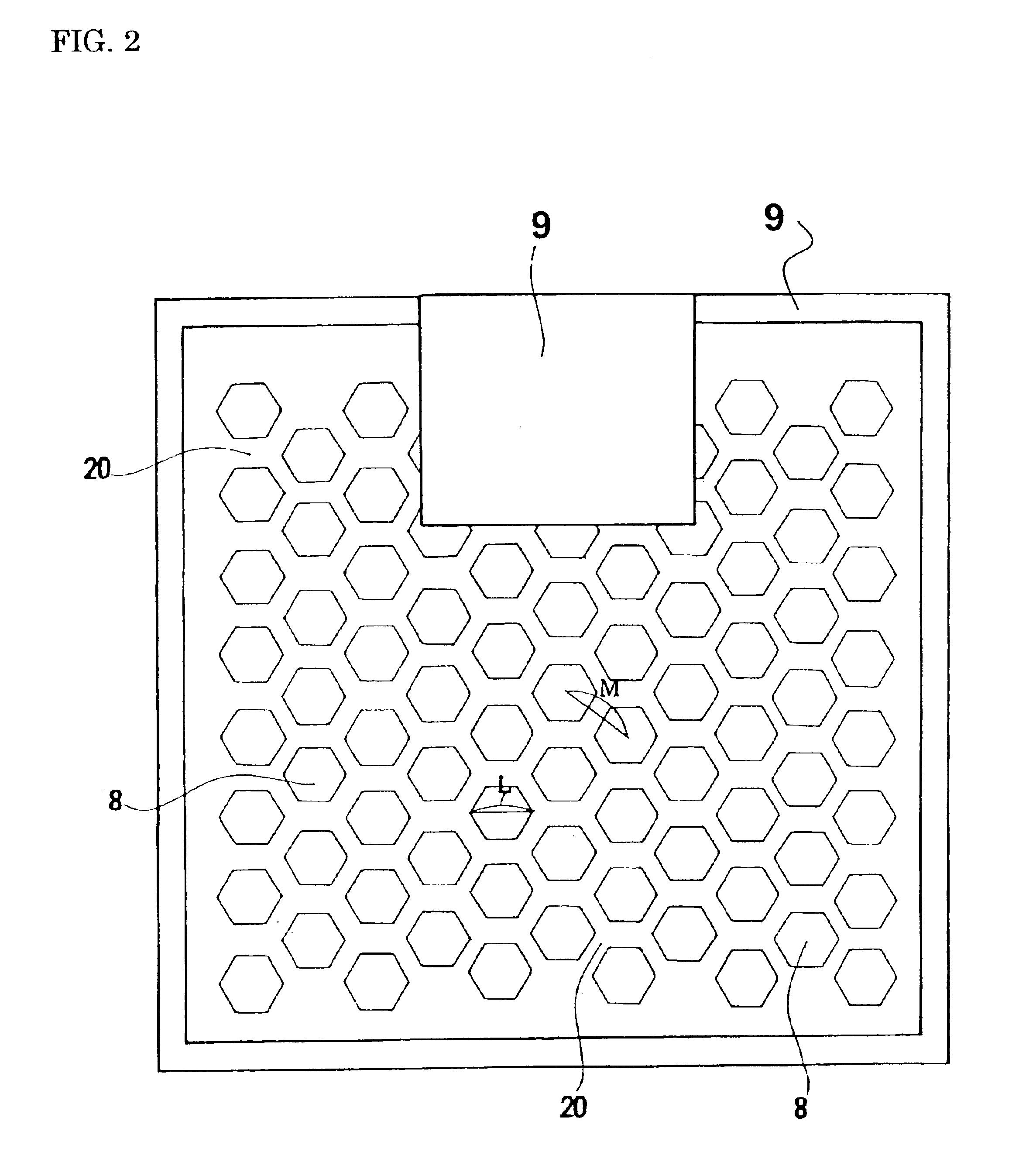Structure of p-electrode at the light-emerging side of light-emitting diode
a technology of light-emitting diodes and pelectrodes, which is applied in the direction of basic electric elements, electrical apparatus, and semiconductor devices, can solve the problems of difficult to obtain a low-resistance p-type contact layer, the semiconductor itself cannot sufficiently diffuse current, and the difficulty in producing a p-type semiconductor, etc., to achieve the effect of increasing the light transmittance of the p-electrode and increasing the optical output of the led
- Summary
- Abstract
- Description
- Claims
- Application Information
AI Technical Summary
Benefits of technology
Problems solved by technology
Method used
Image
Examples
Embodiment Construction
[0111]Embodiments of the present invention are explained below by referring to the accompanying drawings. In the drawings, the same number or sign refers to the same element to avoid duplicated explanation. The ratios of the dimensions in the drawings do not necessarily coincide with the explanation.
[a. Material for the Light-emitting Element]
[0112]The present invention aims at improving an LED that uses ZnSe or GaN, which has a wide bandgap and even when sufficiently doped with impurities, shows high resistivity because of the shortage of charge carriers.
[b. Shape of the Electrode]
[0113]The present invention aims to improve the shape of the p-electrode from which the light emerges.
[c. P-type Contact Layer]
[0114]With a wide-bandgap semiconductor such as ZnSe or GaN, the doping of p-type impurities is not easy. Even if the doping is satisfactorily performed, the activation rate is low, and not many positive holes are excited from the acceptor in many cases. As a result, the p-type ca...
PUM
 Login to View More
Login to View More Abstract
Description
Claims
Application Information
 Login to View More
Login to View More - R&D
- Intellectual Property
- Life Sciences
- Materials
- Tech Scout
- Unparalleled Data Quality
- Higher Quality Content
- 60% Fewer Hallucinations
Browse by: Latest US Patents, China's latest patents, Technical Efficacy Thesaurus, Application Domain, Technology Topic, Popular Technical Reports.
© 2025 PatSnap. All rights reserved.Legal|Privacy policy|Modern Slavery Act Transparency Statement|Sitemap|About US| Contact US: help@patsnap.com



